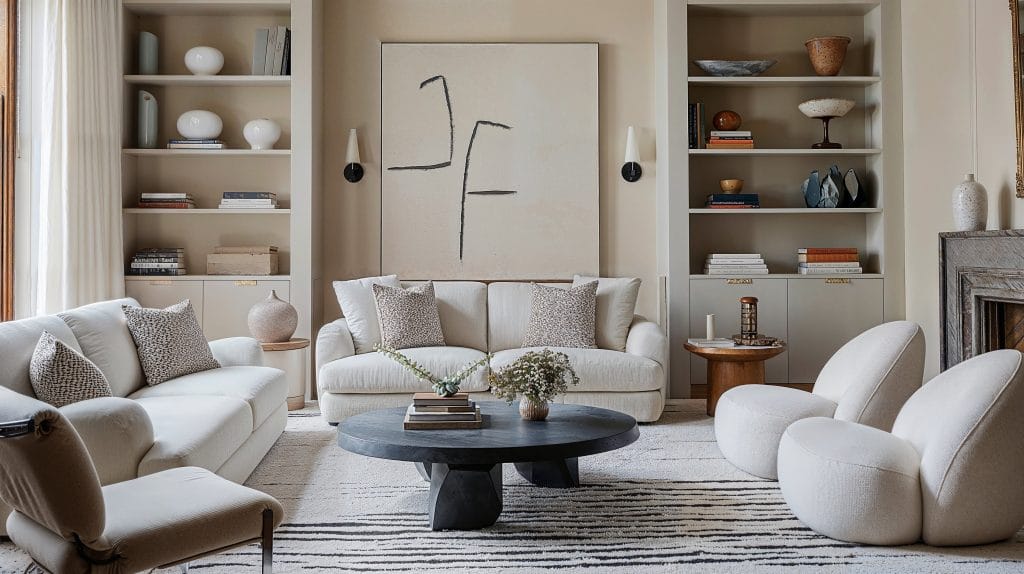Best-rated interior design firms bring your vision to life.
Best-rated interior design firms bring your vision to life.
Blog Article
Transform Your Home With Essential Concepts of Interior Style and Looks
The art of transforming your home through the important principles of interior decoration and aesthetic appeal needs a thoughtful strategy that balances shade, equilibrium, and spatial understanding. By understanding the effect of shade theory and the value of appearance and patterns, one can develop areas that are not just visually attractive however additionally deeply personal. Achieving this equilibrium includes more than simple design; it includes a calculated arrangement and a keen understanding of exactly how each component connects within a space. As we explore these fundamental concepts, think about how they may redefine your understanding of home and personal expression.
Comprehending Color Theory
Recognizing the concepts of color concept enables developers to produce spaces that reverberate psychologically with occupants while satisfying practical needs. Each group plays a crucial duty in developing harmony within a space.
The emotional influence of colors is profound; warm hues such as reds and oranges stimulate energy and heat, while great tones like blues and greens advertise calmness and tranquility. Moreover, making use of corresponding shades improves visual passion, creating striking contrasts that can raise a space's appeal.
Neutral colors, on the other hand, serve as a functional background, permitting various other design components to shine. It is important to consider elements such as illumination and the area's function when selecting a shade combination, as these can change the understanding of shades throughout the day.
Inevitably, a well-considered color design can transform a room, fostering a feeling of comfort and design that straightens with the occupants' preferences. Proficiency of shade concept is, for that reason, a crucial skill for any type of interior developer intending to develop harmonious and welcoming atmospheres.
Achieving Balance in Style
Exactly how can designers accomplish a sense of equilibrium in their rooms? Attaining balance in style is fundamental to developing harmonious interiors.
Asymmetrical equilibrium, on the various other hand, counts on differing components that still accomplish a natural appearance. This method enables for more vibrant and informal setups, offering interest while preserving balance. By meticulously picking differing sizes, shades, and textures, developers can develop a visually compelling area that feels well balanced yet energetic.
Radial equilibrium stresses a main prime focus with components emitting external. This design is commonly seen in round designs, where furniture and decoration develop a cohesive border that attracts the eye inward.
Ultimately, attaining balance requires thoughtful consideration of range, percentage, and the relationships between aspects. miami interior design. By masterfully using these balance concepts, designers can transform spaces right into environments that really feel both visually pleasing and functionally harmonious, improving the overall experience for passengers
Relevance of Spatial Awareness

A keen feeling of spatial understanding permits developers to identify focal points within a space, guiding the viewer's focus to key attributes while keeping a general feeling of unity. It likewise helps in the calculated positioning of illumination, which can considerably affect the perception of area and mood. Furthermore, recognizing spatial connections allows the developer to deal with the particular demands of inhabitants, making sure that each area serves its desired objective without compromising looks.
Inevitably, spatial recognition is important for optimizing the capacity of any kind of indoor space. By meticulously thinking about the interaction in between measurements, format, and feature, designers can produce environments that not only fulfill practical demands yet likewise stimulate a feeling of convenience and charm, boosting the total living experience.
Including Texture and Patterns
Embracing a varied series of appearances and patterns can significantly boost the visual and responsive appeal of an indoor space. read this The tactical use different materials-- such as timber, metal, fabric, and rock-- develops depth and interest, making a space feel much more inviting and vibrant. For instance, incorporating smooth surface areas with rough textures can establish a balance that attracts the eye and engages the detects.
When including patterns, take into consideration both range and repetition. Large patterns can work as prime focus, while smaller sized, refined styles can complement various other components without overwhelming the room. Layering patterns, such as pairing floral pillows with candy striped throws, adds complexity and a sense of consistency if performed attentively.
It is likewise critical to keep a cohesive color combination, guaranteeing that structures and patterns work together instead than compete for attention. By picking a few essential textures and patterns, you can create a linked aesthetic that shows your personal style while boosting the total ambiance of the space. Eventually, the mindful unification of these aspects can change a mundane area right into a sophisticated atmosphere abundant with personality and warmth.
Individualizing Your Room
Creating an area that mirrors your personality useful link is vital to accomplishing a genuinely welcoming environment. Personalization in interior decoration permits you to instill your unique style and interests into your home, transforming it from a plain shelter into a sanctuary that talks to who you are. Begin by choosing a color scheme that reverberates with your feelings-- vibrant hues can stimulate, while soft tones supply serenity.
Integrate art work and design that reflect your interests, whether it be travel, nature, or abstract concepts. Showing personal collections, such as books, photos, or souvenirs, can evoke treasured memories and produce focal factors within a space. In addition, think about tailoring practical items, like upholstered furnishings, to line up with your aesthetic preferences.

Final Thought
Finally, the change of a home via the crucial principles of interior decoration and looks necessitates a detailed understanding of shade concept, equilibrium, spatial awareness, structure, and personalization. Each element contributes substantially to creating an unified and practical living environment - interior design firms. By thoughtfully integrating these concepts, individuals can enhance the aesthetic appeal and emotional resonance of their spaces, eventually cultivating a home that reflects distinct identities while giving comfort and usefulness
Report this page